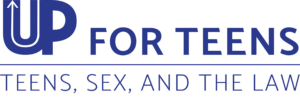Upstream Child Abuse Solutions
We provide upstream interventions and strategies for reducing adverse childhood experiences and promoting resilience so children and families can have positive, supportive, and healthy relationships.

UP FOR CHAMPIONS, in partnership with THE UP INSTITUTE, supports the professionals working to solve child abuse and neglect globally, through advocacy, public education, and family support programs. It is a nonprofit 501(c)(3) organization that aims to create safe and healthy communities for children and their families. UP FOR CHAMPIONS works with community, state, and national organizations to expand and disseminate knowledge about child abuse and neglect.

Victim advocates provide services and resources to ensure a consistent, coordinated, and comprehensive network of support for children and families in crisis.
Read More
Victim advocates provide services and resources to ensure a consistent, coordinated, and comprehensive network of support for children and families in crisis. Research demonstrates that parent/caregiver support is essential to reducing trauma and improving outcomes for children and family members. Evidence-based research practices and ongoing access to comprehensive services are critical to a child and family’s well-being and their ability to participate in the investigation, prosecution, intervention, and treatment. This curriculum has been approved by the National Children’s Alliance under the 2023 Standards for Accreditation as meeting the requirements for foundational training for Victim Advocates.

A No Hit Zone is a simple solution to address a key risk factor for child abuse.
Read More
More than 50 years of empirical research has demonstrated the detrimental effects of corporal punishment (CP) on children. However, in the United States, CP is an entrenched social norm as many parents continue to have favorable attitudes towards its use. A No Hit Zone sets a precedent within the community of a safe and caring environment for families and staff, while promoting effective parenting techniques. UP executives designed No Hit Zone materials for public use because research demonstrates it is a promising practice for changing attitudes about parent-to-child hitting. For additional information and resources visit our No Hit Zone Initiative and download an NHZ toolkit.

Researchers have found that spanking is the most prevalent risk factor for child injuries and fatalities.
Read More
Researchers have found that spanking is the most prevalent risk factor for child injuries and fatalities. Yet, upwards of 70 percent of parents admit to using physical punishment. Many professionals are not prepared, either academically or in practice, to navigate this longstanding cultural landmine. This training aims to educate participants on the harms of corporal punishment and provide them with the tools to have this difficult conversation in an effective and efficient way. It also offers alternative, more effective parenting strategies.

The Teens, Sex, and the Law program helps teens make educated and informed decisions.
Read More
An evidence-informed, school-based training that provides teens and guardians with information to help them make educated decisions concerning relationships and sex. This program covers relevant laws pertaining to teen sexual activity with respect to age, alcohol, texting, sexting, internet, and pornography. Teens will learn the impact of their decisions regarding sexting and online activity and the legal actions that may occur.

Mandatory reporting is a duty that extends beyond one’s professional capacity.
Read More
This training program helps professionals with recognizing, responding, and resolving child maltreatment. It covers the responsibility of mandatory reporters to report child sexual and physical abuse. Participants will gain a comprehensive understanding of the reporting obligations of mandatory and permissive reporters and learn about whistleblower protection laws for mandatory reporters.

Testifying is stressful for mental health providers, witnesses, and victims, particularly for children and adolescents.
Read More
Yet, child protection workers, law enforcement officers, and other professionals regularly testify, often under subpoena. This is a multidisciplinary training program focused on the practical aspects of preparing and presenting in court, as well as strategies for navigating the judicial process in child abuse cases. This program also offers training on how to prepare families and children for testimony and how to advise attorneys and advocates on preparation. Another aspect of the program teaches how to recognize the necessary attributes of a forensic interviewer, interview training, as well as context and components of a trauma and culturally informed child forensic interview.
Provide individualized coaching, consulting, and customized trainings for schools, advocacy centers, mental health agencies, family justice centers, social services, nonprofits, and other youth serving organizations including agencies serving individuals with disabilities. Services comprise of reviewing and developing policies and procedures for program development and evaluation; assisting with accreditation application and compliance; developing capacity to ensure forensic medical capacity; implementing High Reliability Organization (HRO) practices; coordinating No Hit Zone implementation; navigating the systemic issues around mandatory reports; and implementing trauma-informed school practices.
Also assisting organizations in improving cultural practices to meet the diversity, equity, and inclusion (DEI) needs of clients including the importance of conducting developmentally, culturally sensitive interviews, and recognizing how barriers created by cultural differences can interfere with the ability to gain important information, and often lead to misunderstandings and misinformed decision-making.
Internships
Internships are offered on a limited basis to provide students beneficial training opportunities to complement the intern’s formal education and prevention projects. Internships are unpaid, tied to the intern’s formal education program, accommodate the intern’s academic commitments, and designed to accentuate the intern’s academic interests.
Media Resources
The Check Out book series offers a creative child friendly explanation to children and families experiencing trauma. The lead author of the series can be contracted for authoring, designing, or consulting in the development of children’s books so the delivery of forensic and systemic services are trauma-informed.
Train the Trainer
Many of the UP trainings are available as a train the trainer’s model to enhance capacity and community-based delivery. Teens, Sex, and the Law, Painless Parenting, and No Hit Zone have all been successfully scaled using this model. Trainers are contractually required to maintain fidelity of the training model and are proved ample practice opportunities and ongoing support to ensure competence and confidence.

